Make-up Exploration
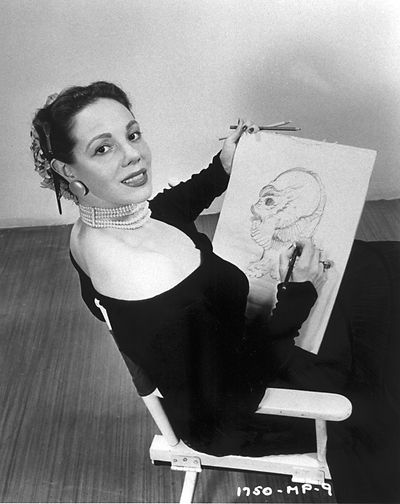
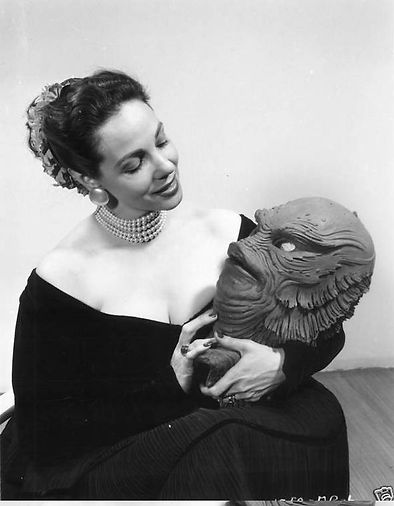
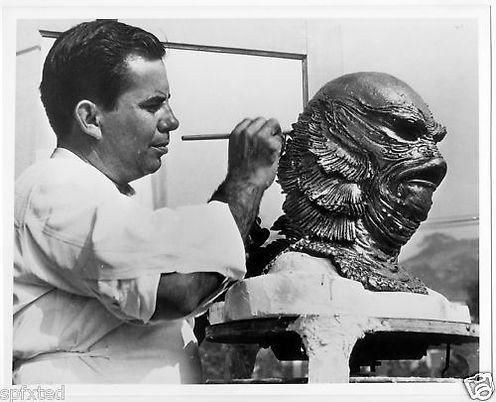
Milicent Patrick with Gill Man Mask, 1953, publicity photos to promote the 3-D motion picture Creature from the Black Lagoon, Universal-International, 1954. Billing her as :The Beauty Who Created the Beast", Universal sent the photogenic Creature co-creator on a national promotional tour during which she participated in over 40 television and radio interviews

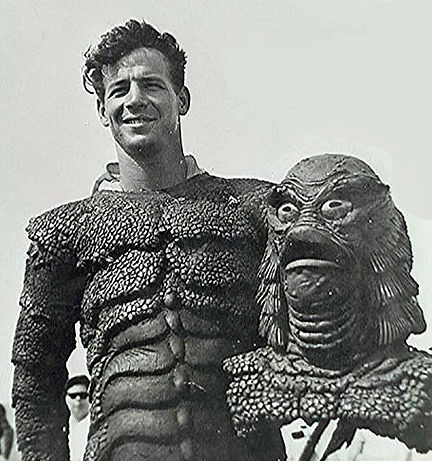
The Gill-Man from Creature From the Black Lagoon (1954)
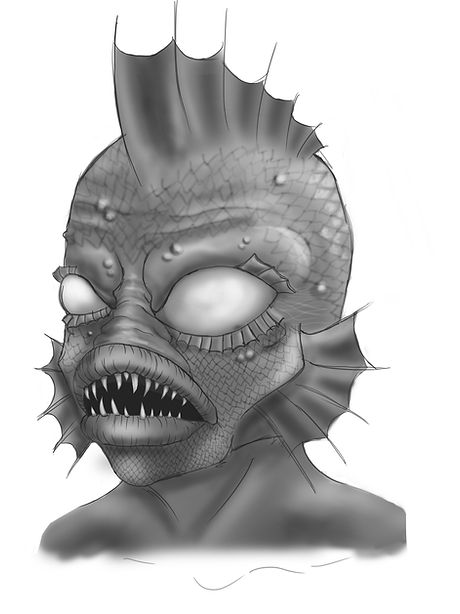
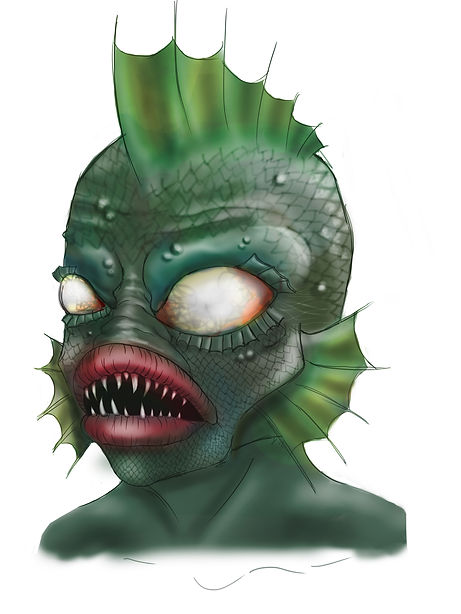
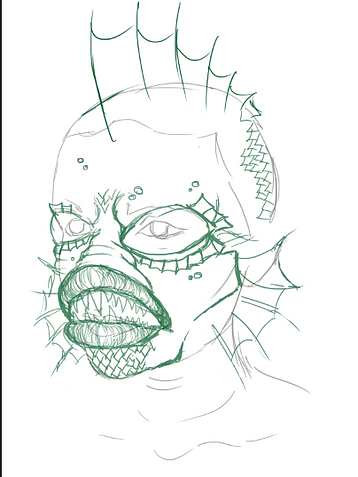

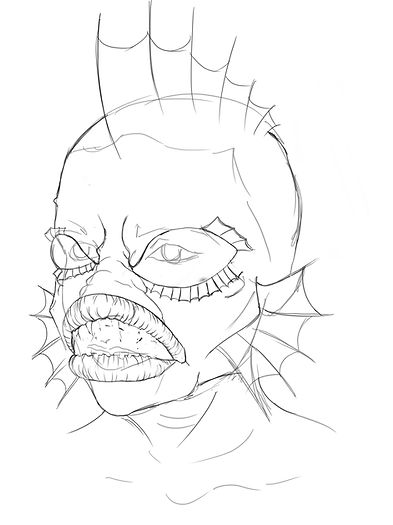

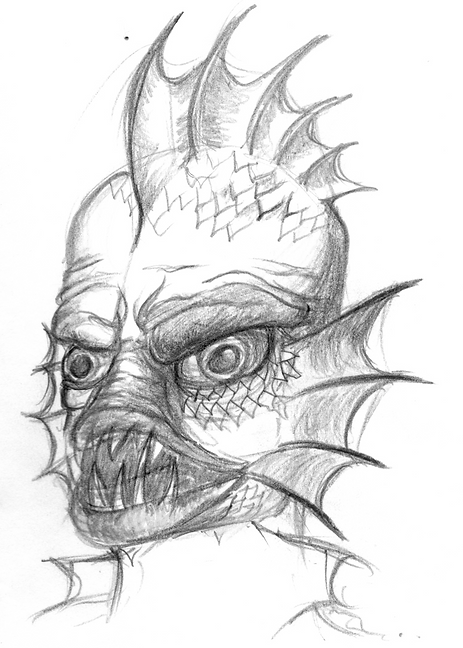




Brian Wade - sculpting a monster suit (based on the Creature from the Black Lagoon.)

Designing References
Form
Texture References
For the form, i took the design of the original monster suit, and just tried to change it a bit. However i still want to pull some things from the classic monster creation.


However because i didnt't want it to look exaxtly the same as the Gill -Man, i decided to find some other sources of nature. I was really interested in looking and researching images of deep sea creatures. Angler Fish were a big inspiration for the design.
Initial Sketches and ideas
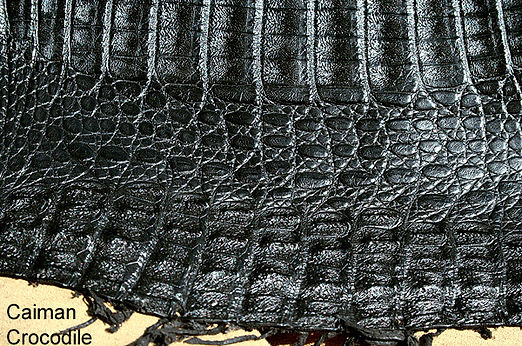
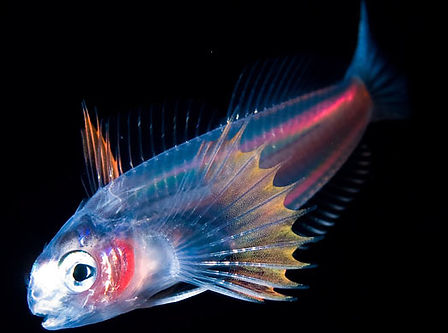
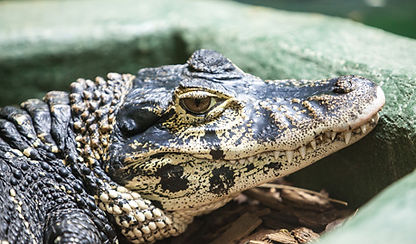
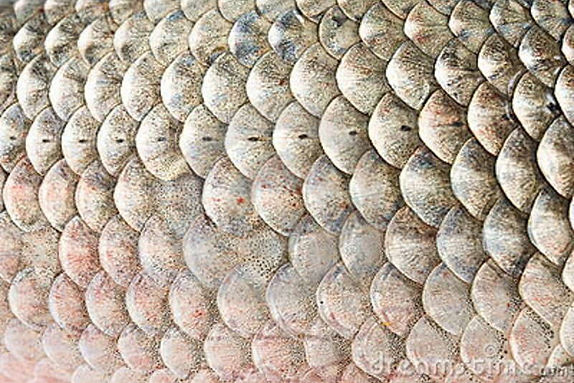
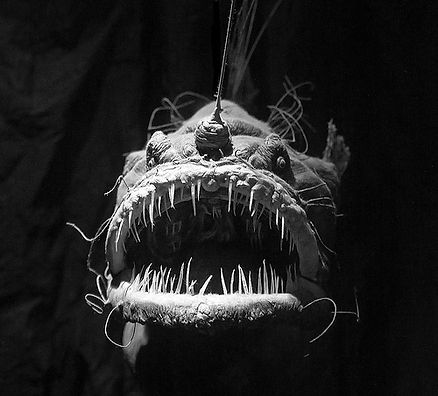

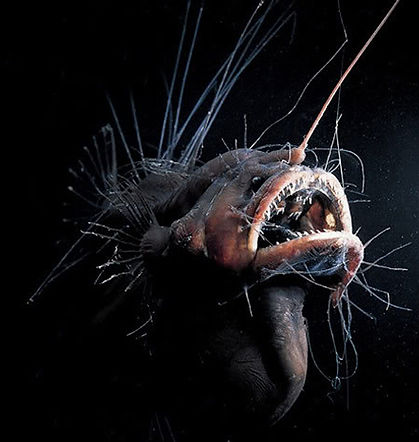
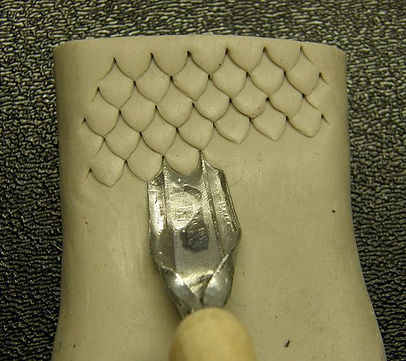
The study of scales is called Squamatology. Scales help to protect a fish from scrapes, parasites and other external injuries. I’ll describe the five basic types of fish scales below.
Scales usually grow on a fish in overlapping plates, with the free end of the scale pointed towards the tail, sort of like the shingles on your roof. They are anchored to the body by the anterior end of the scale, either embedded into the flesh or actually attached internally by bone.
Cycloid Scales
A fish can be aged by counting the growth rings, just like you can do with trees and clams. Herring, anchovies and other groups of bony fish have large cycloid scales that fall off very easily.
Ctenoid Scales
"Bony-ridged" scales. Again, the vast majority of fish have one of these two types of scales. Some, like flounders, actually have both.
Ganoid Scales
Ganoid scales are rare among modern fish. These scales act like armor to form a nearly impenetrable barrier to predators. What’s unusual about these scales is that they do not overlap but instead fit together like pieces of a jigsaw puzzle. These scales also grow with the fish, not only in length, but in width and thickness as well. The larger the fish the more daunting is the armored shield.
Cosmoid Scales
Another very rare scale type, but one that was no doubt common in extinct species, is the cosmoid scale. These are limited today to the primative lobefins and lungfish.
Placoid Scales
Also known as dermal denticles, placoids are tooth-like scales found on sharks, skates and rays. Unlike the previous types of scales, placoids do not grow with the fish. As a shark gets larger it grows new scales to fill in the gaps between the scales. Placoids have a sharp ridge down the center of the scale made out of an enamel-like substance called vitrodentine, a substance very similar to that covering our teeth. This enamel ridge is called an ectodermal cap, and this is important because without this enamel cap the sharks could not feed. Technically, sharks are toothless. The structures we call the "teeth" are simply modified dermal denticles. That poisonous spine on the tail of the stingray is the same thing. A greatly modified placoid scale.
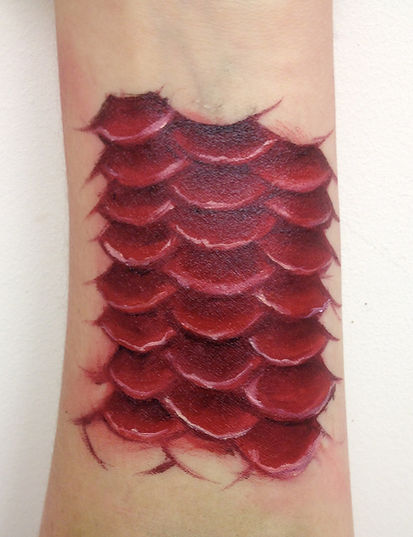



Designing Creatures/Monsters
Last year i took Wayne's 2D Creature creation class. Through that i learnt the most importrant things to keep in mind whilst creating creatures inlude:
Backstory of the creature
The Anatomy
Location/setting/climate
Gender/how they mate
Is it Preditor/prey/ neutral
For my creature i am just redesigning the gill-man most of these aspects have already been invented by the director. but i can still use them to change the design and make a realistic monster.
Anatomy- Half Man, Half Fish
Location- The Peruvian Amazon
Gender- Male
Preditor
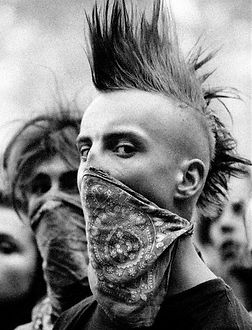

What i like about these images of the angler fish, are the shap of the lips and the mouth. the semi curves
The Main reason for looking at this fish in more detail
Fish Spines and Fins
Painting Scales
Squamatology



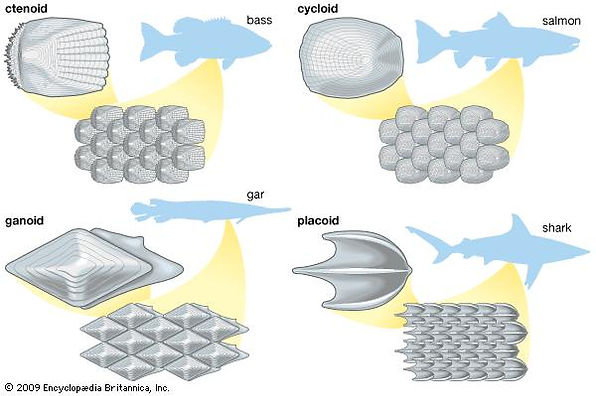

Digital Designs

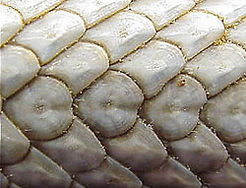


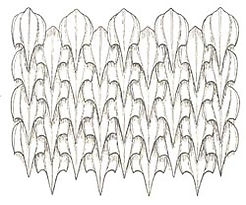
The main credited makeup artist on the Creature from the Black Lagoon was Bud Westmoor. He sculpted and created the monster suit from Millicent Patrick's design.
This links back to the idea of Equality in the industry how she did not get recognized for her work. But positively it shows how the industry has changed. Nowadays we hope that female artists get the recognition that they deserve. This is happening with Artsists such as Vee Neill, Frances Hannon and Robin Matthews, who have all won Academy awards for their work in recent years.
There are 2 things that i find interesting about these photos and the design of the Gil-Man.
-
Firstly that the suit had to be waterproof. And the actor had to be comfortable in the water with the suit on.
-
This took many tests and practices.
-
The actor who wore the suit in the underwater scenes, Ricou Browning had to hold his breath underwater for up to 4 minutes.
The suit was made out of latex and rubber for this to work.
It was also pre coloured and painted with Rubber Cement.
The Second this about the design that i thought was relevant was the artists references and where they pulled with initial designs and concepts from.
I like the wrinkles in the forehead and i think i will encorporate this into my design, because it adds a level of realism and a human aspect to the character
Monster Designs
During an interview with Ben Chapman the actor who plaed the Gill-Man in Creature from the Black Lagoon he stated that the design for the gill man stemmed from some 17th century wood carvings of sea-Monks and Sea-Bishops that Millicent Patrick Found.
I'm a paragraph. Click here to add your own text and edit me. I’m a great place for you to tell a story and let your users know a little more about you.
I also really like the mouth on the creature and want to use this in my design as i feel as though it is a major part of the makeup and the most sucsesful in making the face fish like.
Although i don't want to base my makeup on a sea-monk i think it is still important to add some details from them into my makeup. I particularly like the Teeth on the outside of this design.
Adding to this i really like the body scales on this drawing which are lacking in the face makeup of the Gill Monster but i want to try and include in mine.
Fig. 259
Fig. 284
Fig. 283
Fig. 305
Fig. 306
Fig. 303
Fig. 304
Fig. 301
Fig. 302
Fig. 299
Fig. 300
Fig. 297
Fig. 298
Fig. 293
Fig. 296
Fig. 290
Fig. 291
Fig. 295
Fig. 294
Fig. 292
Fig. 278
Fig. 285
Fig. 287
Fig. 289
Fig. 288
Fig. 286
Fig. 279
Fig. 282
Fig. 280
Fig. 277
Fig. 281


Fig. 276
Fig. 275
Fig. 271
Fig. 273
Fig. 272
Fig. 266
Fig. 261
Fig. 269
Fig. 263
Fig. 262
Fig. 270
Fig. 267
Fig. 268
Fig. 264
Fig. 260
Fig. 265
Fig. 274